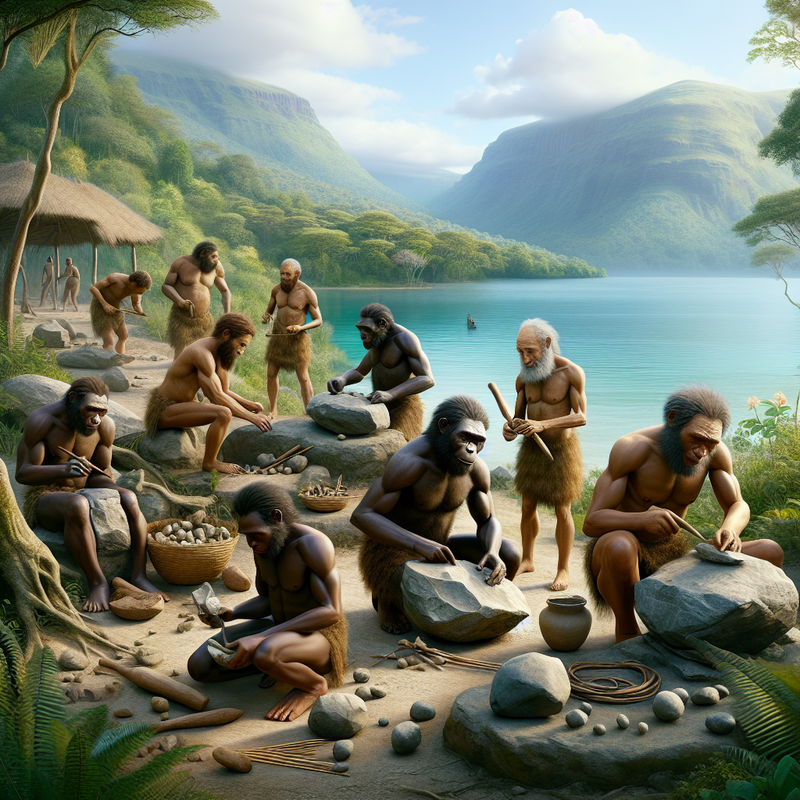An extraordinary archaeological breakthrough at the Kenyan Nyayanga locale
Stone implements, estimated to be 2.9 million years old, have been excavated by the shoreline of Lake Victoria. Researchers from institutions including the Smithsonian’s National Museum of Natural History and Queens College, CUNY, were pivotal in unearthing what are among the earliest indications of tool utilization, suspected to belong to the Oldowan collection of implements, marking a critical step forward in the epoch of the Stone Age.
The age of the unearthed tools
The excavation lead, Queens College’s Thomas Plummer, also affiliated with the Smithsonian, along with his team, have secured multiple forms of evidence pinpointing the age of the tools to be within the range of 2.6 to 3 million years old. Notably, the investigation’s impact is heightened by the discovery of two sizeable molar teeth from Paranthropus, an ancient hominin and one of humanity’s close genetic branches. “The co-occurrence of Paranthropus with an abundance of stone tools propels us to question which of our hominin relatives crafted these implements,” declared Rick Potts, study’s lead author and director of Human Origins at the National Museum of Natural History.
The groundbreaking discovery and its implications
This groundbreaking discovery engenders a novel investigative scenario suggesting that multiple hominin lineages, potentially including Paranthropus, might have been the creators of these primordial tools. This proposition disputes the entrenched notion that solely our own genus, Homo, had the skill to craft stone implements. “The conjunction of Paranthropus and these tools presents us with an engaging evolutionary mystery,” noted Potts.
The significance and usage of the Oldowan tools
Scrutiny of the Nyayanga tools has depicted their utilization in processing diverse resources such as vegetation, flesh, and bone marrow—critical elements of a diet that existed long before the mastery of fire was attained nearly 2 million years later. Potts illustrated the significance of the Oldowan tools by comparing them to “a newly evolved set of external teeth.”
The research and its future implications
Moreover, the research extends the geographic boundaries of Oldowan tool usage by an additional 800 miles beyond the previously oldest-known tool sites at Ledi-Geraru, Ethiopia. The usage signs on the Nyayanga tools suggest their crucial role in hominins’ adaptive strategies to various habitats. These findings do not merely illuminate the technological strides of our early forebears but also the shifting landscapes of East Africa during that era. They emphasize the necessity for a fresh examination of tool development’s evolution and its impact on the hominins, contemplating the idea that multiple ancestral lines may have collectively mastered a changing environment with the aid of stone technologies.
The investigation’s support and future prospects
Currently, the investigation enjoys backing from numerous entities, including the Leakey Foundation and the National Science Foundation, and it holds the promise of delving deeper into the intricate history of human beginnings.




